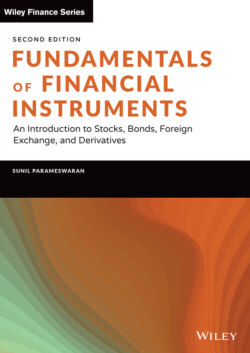Читать книгу Fundamentals of Financial Instruments - Sunil K. Parameswaran - Страница 99
На сайте Литреса книга снята с продажи.
EXAMPLE 2.15
ОглавлениеConsider the series of cash flows depicted in Table 2.5. Assume that the annual rate of interest is 8%.
TABLE 2.5 Vector of Cash Flows
| Period | Cash Flow |
|---|---|
| 6 months | 2,000 |
| 12 months | 2,500 |
| 18 months | 3,500 |
| 24 months | 7,000 |
The present value will be calculated as
Similarly the future value will be
However, if it were to be explicitly stated that the effective annual rate is 8%, then the calculations would change. The semiannual rate that corresponds to an effective annual rate of 8% is . The present value will then be given by
Similarly, the future value will then be given by
The present value is higher when we use an effective annual rate of 8% for discounting. This is because the lower the discount rate, the higher will be the present value; obviously, an effective annual rate of 8% is lower than a nominal annual rate of 8% with semiannual compounding. Because the interest rate that is used is lower, the future value at the end of four half-years is lower when we use an effective annual rate of 8%.
In this case, if we were to calculate the IRR for the given cash flow stream, we would get a semiannual rate of return. We would then have to multiply it by two to get the annual rate of return. The IRR for this cash flow stream, assuming an initial investment of $12,500, is 6.2716%. The IRR in annual terms is therefore 12.5432%.
